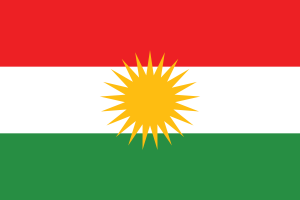Language/Central-kurdish/Culture/Kurdish-Family-and-Social-Structure
| ◀️ Kurdish Traditions and Customs — Previous Lesson |
Learn about the family and social structure in Central Kurdish-speaking regions. This lesson will help you understand the importance of family relationships, social hierarchies, and interpersonal dynamics in Kurdish culture.
Consider broadening your understanding by checking out these related lessons: & Kurdish Traditions and Customs.
Introduction to Kurdish Family and Social Structure
Central Kurdish-speaking regions have a rich and diverse social fabric that is an integral part of the wider Kurdish culture. Family holds a central position in Kurdish society, with extended family networks providing support, resources, and connections for individuals in the community. This section will introduce you to some key aspects of family and social structure in Central Kurdish-speaking areas.
Importance of Extended Family
Kurdish families are often closely-knit and include not only immediate family members but also more distant relatives. Relationships between extended family members are valued and maintained through frequent communication, visits, and gatherings at family occasions such as weddings and religious holidays.
Many Kurds live in multigenerational households, where grandparents, parents, and children all share a home, or at least live in close proximity to each other. This living arrangement ensures that elders are cared for by their families as they age, and provides an environment in which younger generations can learn respect for their elders and gain life skills from intergenerational interaction.
- Respect for elders
- Multigenerational households
- Importance of family relationships
Social Hierarchies and Roles
Kurdish society is characterized by a strong sense of hierarchy, which plays a significant role in defining relationships between people at different levels within the community. Traditional Kurdish society had well-defined roles based on age, gender, profession, and social status. However, these traditional hierarchies and roles are gradually changing due to factors such as urbanization, education, and the influence of western ideas.
Some key social roles and their associated responsibilities include:
- The father: As the head of the family, the father is responsible for providing for his wife and children, making important decisions, and ensuring that the family's honor is upheld.
- The mother: The mother typically manages the home, raises the children, and helps maintain family traditions and customs.
- The eldest son: The eldest son is expected to help support the family financially and contribute to important decisions. He also often takes on the role of his father's deputy, eventually assuming the role of family head when his father passes away or is unable to fulfill his duties.
As attitudes change and Kurdish society evolves, more women are participating in the workforce and pursuing higher education, challenging traditional gender roles and expectations.
Social Interactions and Etiquette
Politeness, respect, and hospitality are cornerstones of Kurdish culture. When interacting with others, it is important to observe the following etiquette practices:
- Greeting: Greetings usually consist of a handshake or a gentle embrace, followed by placing the right hand over the heart. Older individuals should always be greeted before younger ones.
- Respect: Always speak to others with respect and address elders with formal titles such as 'Mam' (uncle) and 'Xala' (aunt) even if they are not related.
- Hospitality: Kurds are known for their generosity and hospitality. When invited to someone's home, it is customary to bring a small gift for the host, such as flowers or sweets, and to accept any refreshments offered.
Marriage and Family Life
Marriage and family life are central aspects of Kurdish culture and play a significant role in shaping societal norms, values, and relationships.
Traditional Marriage Practices
Arranged marriages have been a common practice in Kurdish society, although this is slowly changing, particularly in urban areas. Families often had a strong say in their children's choice of spouse, with factors such as a family's reputation, wealth, and social standing being considered.
Another traditional practice is cousin marriage, in which individuals marry a first or second cousin from their father's side. This practice is believed by some to strengthen family ties and reduce the risk of marital conflicts.
Today, more young people are choosing their partners based on love and shared interests, and the involvement of families in arranging marriages is decreasing.
Weddings and Celebrations
Kurdish weddings are exuberant, multi-day celebrations involving large gatherings of family and friends. Traditional elements of a Kurdish wedding may include:
- Engagement party: An engagement party or 'Bakûş' is held to announce the couple's intention to marry. This usually involves gift exchanges between the families, often including gold jewelry for the bride.
- Wedding procession: On the day of the wedding, the groom arrives at the bride's house with a procession of relatives and friends, accompanied by music, dancing, and the firing of guns in the air.
- Wedding feast: After the wedding ceremony, a large feast is held, featuring traditional Kurdish dishes such as 'Kebab' (skewered meat), 'Dolma' (stuffed vegetables), and 'Biryani' (spiced rice dish).
Conclusion
Understanding the family and social structure in Central Kurdish-speaking regions is crucial for a comprehensive understanding of the Kurdish language, culture, and society. By learning about the importance of family relationships, social hierarchies, and etiquette, you will gain valuable cultural knowledge that can enhance your Central Kurdish language learning experience.
Other Lessons
Template:Central-kurdish-Page-Bottom
| ◀️ Kurdish Traditions and Customs — Previous Lesson |

